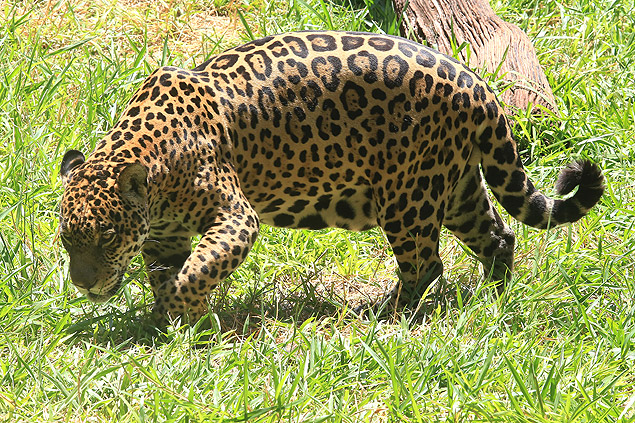Latest Photo Galleries
Brazilian Markets
17h29 Bovespa |
+0,65% | 127.352 |
16h43 Gold |
0,00% | 117 |
17h00 Dollar |
0,00% | 5,1151 |
16h30 Euro |
+0,49% | 2,65250 |
ADVERTISING
Jaguar Populations in the Pantanal Recovering to Delight of Tourists
02/18/2016 - 09h25
Advertising
RODRIGO VARGAS
FROM PANTANAL, MATO GROSSO
The "hunt" begins at first light, with tourists trying to make themselves comfortable on the seats of the motorboat. The boatman checks the last details whilst making radio contact with other launches that are making the same trip. All have the same target: the jaguar.
The "weapons" are non-lethal: state-of-the-art cameras with telescopic lenses. Most of the tourists, with nervous smiles on their face, do not speak a word of Portuguese.
| Silva Junior/ Folhapress | ||
 |
||
| The jaguar is the main attraction of the tours. |
In less than two hours, there appears what looks like a piece of wood floating on the waters of the River Cuiabá. "It's her!" says the boatman, dispelling the initial, mistaken impression.
In the Pantanal, fishing tourism has been losing ground to the "photographic safaris", which have been increasing in popularity for at least the last five years. They are now one of the main sources of revenue for guides, boatmen and hoteliers.
And while previously sightings of the largest feline of the Americas were very rare, for only the luckiest tourists, today the jaguar is the main attraction of the tours.
"In months like September, if a tourist spends two days here without seeing a jaguar, they get their money back," says Ivan Freitas da Costa, 38, a partner at the Pantanal Norte hotel, in the Porto Jofre region (in Poconé, 140 kilometers from state capital Cuiabá).
Once hunted as a pest by cattle farmers, the jaguar has benefited from the reduction of agriculture in the Pantanal, and in its old homelands, such as along the banks of the Cuiabá, São Lourenço and Paraguai rivers, populations have been recovering.
Translated by TOM GATEHOUSE
Read the article in the original language



